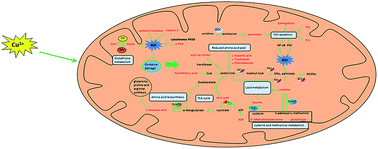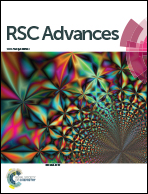Metabolomics analysis reveals heavy metal copper-induced cytotoxicity in HT-29 human colon cancer cells†
Abstract
Copper (Cu) is toxic to humans and animals as a result of the generation of reactive oxygen species (ROS) through Fenton reactions and abnormal alterations in metabolism and biological processes. For the general population, diet and drinking water are the main sources of Cu exposure, and the intestinal tract is therefore the first barrier against Cu-induced toxicity. Previous studies have demonstrated the cytotoxicity of Cu exposure with a focus on specific aspects such as oxidative stress and Cu transportation. But the information on the global response of cells to Cu exposure is limited. Metabolomic methods, featuring the high-flux detection of whole metabolites in cells and organisms, provide promising alternatives to conventional methods in the study of global cytotoxicity response. In this study, the human colon carcinoma cell line HT-29 was selected and a metabolomic method based on liquid chromatography-mass spectrometry (LC-MS) was adopted to investigate the alteration of the metabolomic profiles of intestinal cells after Cu exposure. The results indicated that the metabolite pools of HT-29 cells were significantly changed after Cu treatment. In total, 77 metabolites were identified as being significantly changed. Transcriptional validation by RT-qPCR was conducted to confirm metabolomic results. By combining the data from metabolomics and RT-qPCR, we concluded that the mechanisms of Cu-induced cytotoxicity in HT-29 cells were correlated with the induction of cell apoptosis, increased oxidative stress, alteration of mitochondrial β oxidation, and the configuration of lipid metabolism and energy metabolism. We expect this study to lay the foundation for the elucidation of the toxic effects of Cu exposure in the human intestinal tract.


 Please wait while we load your content...
Please wait while we load your content...